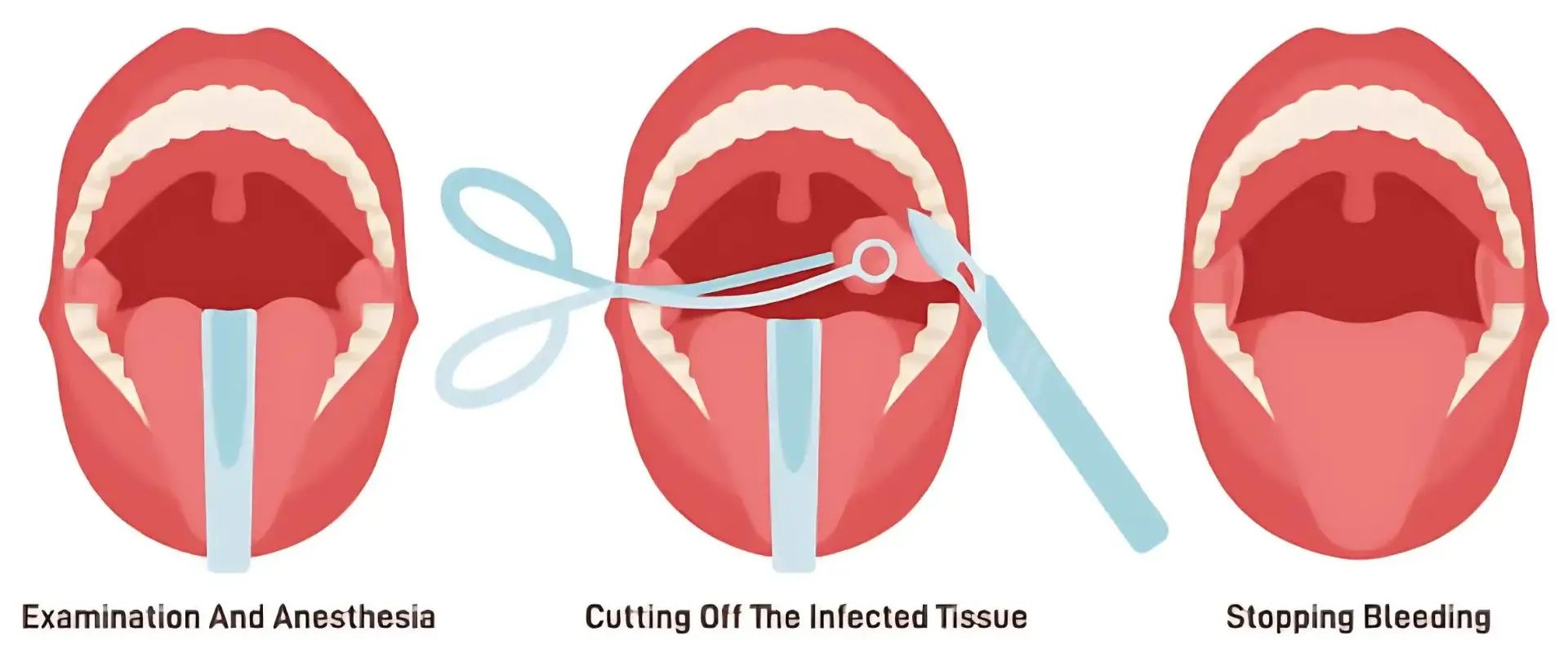Tonsillectomy
A tonsillectomy is a surgical procedure performed to remove the tonsils, which are small lymphoid glands located at the back of the throat. This procedure is commonly carried out as the treatment for chronic tonsillitis.

A tonsillectomy is a surgical procedure that involves the removal of the tonsils, usually for chronic tonsillitis, frequent throat infections, or obstruction to breathing due to enlarged tonsils.
This common procedure helps reduce risks of infection, helps improve sleep disturbances such as obstructive sleep apnea, and enhances throat health and the quality of life. Recovery usually takes about one to two weeks.
Symptoms that May Indicate a Need for Tonsillectomy
Symptoms that may indicate the necessity for a tonsillectomy include chronic sore throat, recurrent throat infection (leading to recurrent fever, difficulty swallowing, and foul smell from oral cavity), snoring, recurrent or interrupted sleep due to enlarged tonsils. Breathing problems caused by swollen tonsils are also a symptom of the possibility of surgical intervention.

When is Tonsillectomy Generally Recommended?
Tonsillectomy is indicated in chronic or recurrent tonsillitis, frequent throat infections, and dyspnea caused by hypertrophied tonsils. Other indications include sleep apnea, abscess formation, and rarely, cancer of the tonsils.
- Chronic or Recurrent Tonsillitis
- Sleep Apnea or Breathing Issues from Enlarged Tonsils
- Abscess or Infection near the Tonsils
- Frequent Throat Infections Resistant to other Treatment
- Rare Conditions like Cancer of the Tonsils
The Tonsillectomy Procedure
The tonsillectomy procedure involves the surgical removal of the tonsils, which can be done using traditional surgical methods, coblation or cautery techniques, or cautery to ensure minimal bleeding and discomfort.
1

Traditional Surgical Removal
2

Coblation or Cautery Techniques
These methods use temperature plasma and/or heat or electricity for precise tissue removal with minimal damage.
3

Duration of the procedure
4

Type of Anesthesia Used
Recovery & Aftercare
- Typical recovery timeline (1–2 weeks)
- Common post-surgery symptoms: Throat pain, mild fever
- Warning signs to watch for: Excessive bleeding, high fever, Breathing Issues
- Tipe for a smooth recovery: As advised by the Doctor
